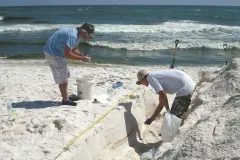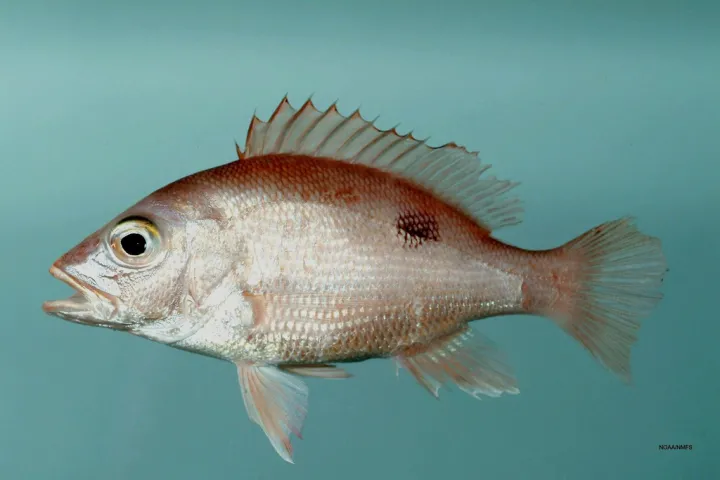Three Ways You Can Use Genomics to Study Oil Spill Impacts

You’ve probably heard of genetics—you can now swab your mouth and use DNA to find information about your ancestry going back hundreds to thousands of years or see if you have a predisposition for a particular disease. But genomics—the study of many genes in an individual or even entire communities of organisms—is much more powerful. Only recently have new ultra-fast DNA sequencing techniques made genomic analyses possible on a wide scale, including for studies of the effects of oil spills.
While some impacts of an oil spill are immediate and jarring, others aren’t visible to the naked eye. In the case of the Deepwater Horizon oil spill, genomics has helped us to understand where the oil went, what happened to the ecosystem and to think about innovative ways of responding to future spills. The Gulf of Mexico Research Initiative (GoMRI) has funded a variety of genomics projects in the past five years, taking advantage of these new methods for the first time to study the impacts of oil on ecosystems and species. Here are three examples.
1. What’s the Microbial Baseline?
When we talk about restoring the Gulf of Mexico after the Deepwater Horizon spill there is a major hurdle: scientists don’t have benchmarks to determine the original state of ecosystems for restoration. That makes it difficult to say “all clean”!
To address this problem, scientists can use genomics, or more specifically genetic markers of microbes as “bioindicators,” to tell the difference between “pristine” ecosystems that have not been touched by an oil spill vs. oil-affected environments. Microbes respond quickly to changing conditions—whether in sandy beaches, the floor of the deep sea, or at natural methane seeps—so communities of microbes (and what those microbes eat) will change as microbes digest different components of oil after a spill. Identifying the specific genes coding for particular enzymes that break down oil and its different byproducts can indicate to researchers the pathway of degradation as well as the extent of ecosystem recovery.
GoMRI researchers, including Joel Kostka who is a professor of microbial ecology at the Georgia Institute of Technology, followed the breakdown of the oil within sandy layers of Florida’s Pensacola Beach using genomics. They found that there were “first-responder” microbes that immediately grew in population size. These microbes were able to make quick work of the most easily digestible parts of the oil—compounds consisting of simple straight carbon chains. Once the first responders scavenged these simple carbon chains, they were followed after a few months by different microbial groups that were hungry for more complicated branched and circular carbon compounds in the oil. A year post-spill, with oil undetectable in the sand, the microbial community had returned to its original makeup of more specialized microbial groups adapted to nutrient poor conditions found on the beach. Knowing the baseline and understanding the succession of microbes in an ecosystem after a spill can provide a cheaper and easier way to tell us how much oil has degraded when all is said and done and the ecosystem is restored to its original state.
2. A Speedier Cleanup
Living within just a small bucket of deep-sea sediments are hundreds of thousands of bacterial species. These tiny organisms are all searching for one thing—food. Some microbes that live in sediments are specifically looking for food in the form of carbon. “There’s an entire subset of life down there that is ready and waiting for a dump of carbon into the environment,” says Jack Gilbert, associate professor at the University of Chicago and a GoMRI-funded researcher. And oil is a “wonderful food source” for a carbon-eating community, Gilbert adds.
Gilbert’s group is studying microbes and their metabolism in hopes of understanding how the carbon-loving bacteria responded to the huge influx that came with the Deepwater Horizon oil spill. They are not only looking at immediate physical responses—like which microbe species are stepping up to eat the carbon—but also how the microbes that snack on oil from natural seeps have evolved over millions of years to deal with such an unreliable food source.
To do this they sequence the genomes of microbes found in sediment cores collected after the spill, which tells them which species are present and what functions they can perform, including what hydrocarbons they can easily consume. They can also use this genomic information to understand the natural selection pressures—drivers of evolutionary change—which have shaped the ability of these organisms to consume oil. That information is then plugged into models that predict how the community of microbes reacts to such a large increase in the amount of available carbon in the environment. In the future this type of work could help to improve the speed at which oil is cleaned up after a spill—if we have a better grasp on what microbes are degrading oil, it’s possible they could be engineered to hurry that process up.
At this point, predicting how those specially engineered microbes might interact with the larger community is difficult. The naturally occurring microbes might simply do a better job than those that are added after the fact or any dispersants that are used—but those are questions that genomics might also be able to help answer.
3. Following the Fish
Genomic studies aren’t restricted to just microbes. Scientists are also able to learn about how populations of larger organisms, like fish, are affected by oil spills over time.
David Portnoy, an Assistant Professor of Marine Biology at Texas A&M University-Corpus Christi, and his colleagues are looking at several fish populations to see if they can detect long-term impacts from the Deepwater Horizon oil spill. They are taking tissue samples from populations of red snapper from all across the Gulf of Mexico—Texas, Florida, Louisiana and Mexico—and sequencing their DNA.
The genetic information gleaned from this sequencing can then be compared between red snapper populations distributed across the Gulf, in order to find variations within the populations. The researchers also directly compare the DNA from before and after the spill of populations that likely made direct contact with the oil spewing from the Macando wellhead. Diversity within genes of a population, and a change in that diversity, can indicate that fish have died or had trouble producing young that survived to replenish the population.
The work is still ongoing. Portnoy hopes to study more fish, especially several species that have an “intimate association with the sediment,” where a significant amount of oil ultimately ended up. With more information, more questions can be answered, such as why some fish species may have been negatively affected by the oil and others fared better.
Dr. Rita Colwell, Chair of the GoMRI Research Board, said she is pleased that there has been such an increase in the number of people involved in genomics work over the lifetime of the Gulf of Mexico Research Initiative, and that there are so many useful applications stemming from the work. Other GoMRI studies that make use of genomics include those that explore the impact of oil and dispersant on human health and the impact of the oil on flat back mud crabs. The applications of genomics are essentially endless. There is still much to learn and many questions still to come, but genomics help us to understand what happens on a level we can’t see with the naked eye.
The Ocean Portal receives support from the Gulf of Mexico Research Initiative (GoMRI) to develop and share stories about GoMRI and oil spill science.
The Gulf of Mexico Research Initiative (GoMRI) is a 10-year independent research program established to study the effect, and the potential associated impact, of hydrocarbon releases on the environment and public health, as well as to develop improved spill mitigation, oil detection, characterization and remediation technologies. For more information, visit http://gulfresearchinitiative.org/.



